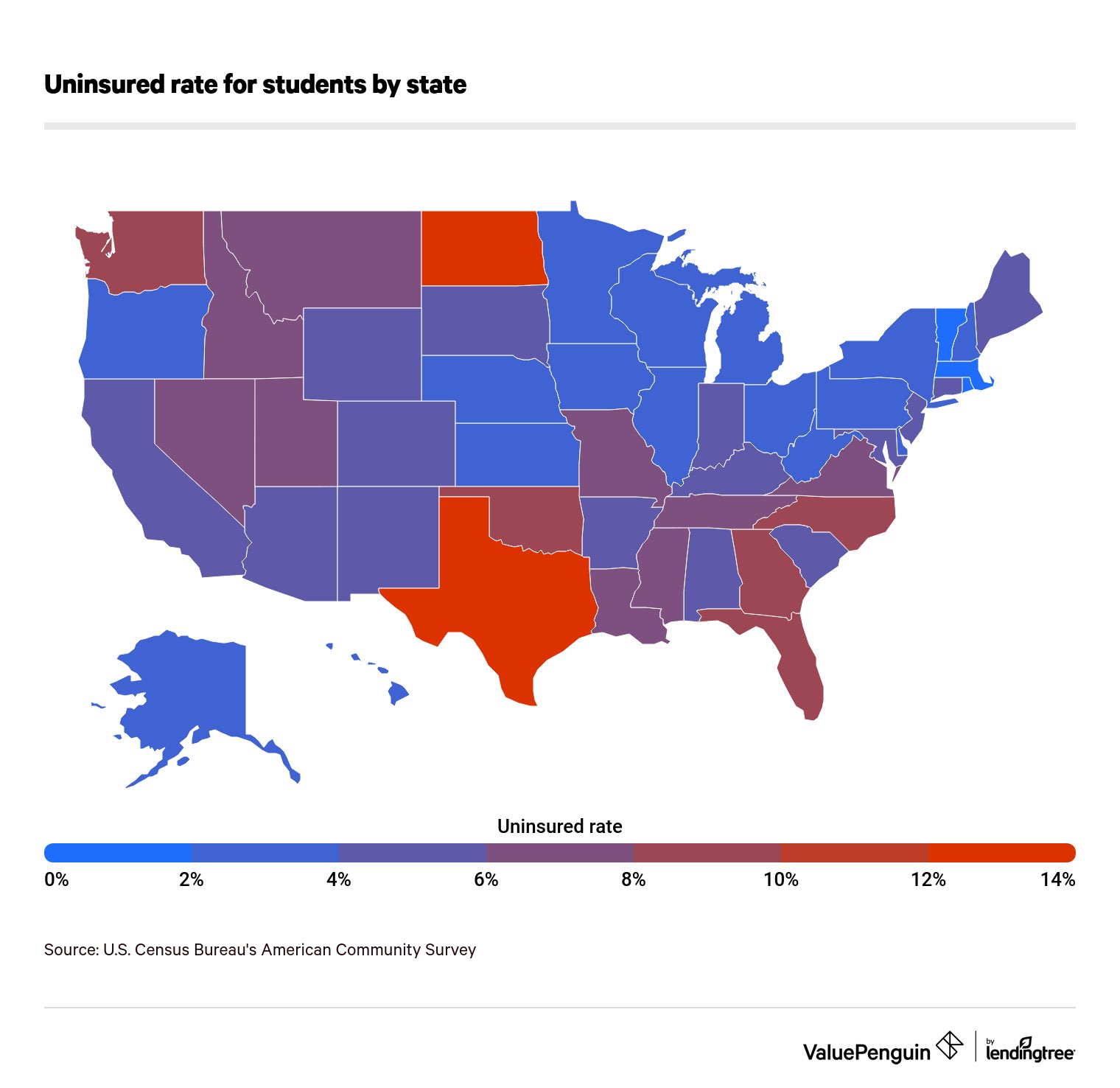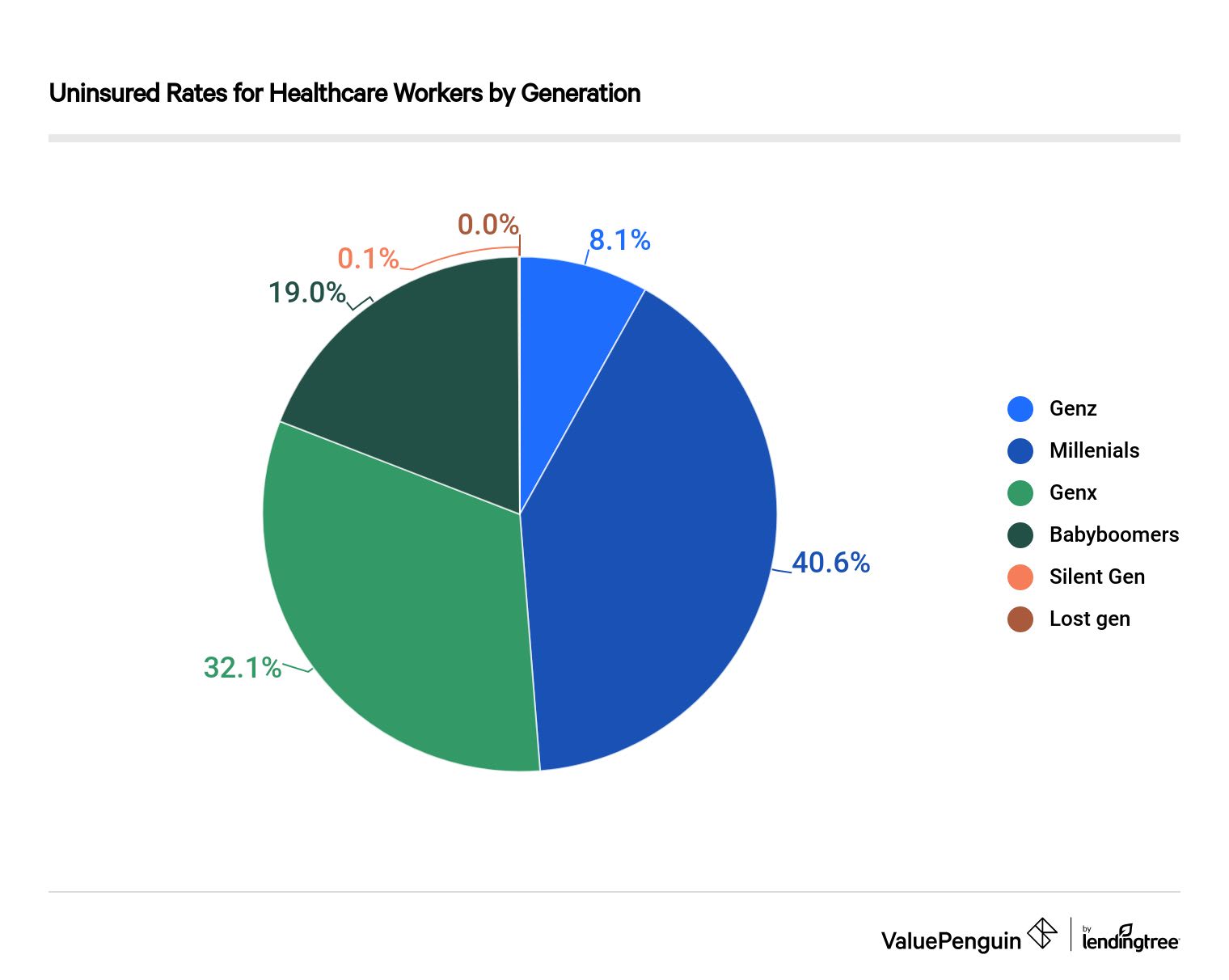Health Insurance
Nearly 600,000 Health Care Workers On Frontlines of COVID-19 Don’t Have Health Insurance

ValuePenguin found that nearly 600,000 such workers are currently uninsured. Furthermore, part of this population is considered at high risk for a serious infection if they catch COVID-19. For this reason, we decided to take a deeper look at which health care workers are uninsured and where.
Key Findings
- Texas leads the nation with the highest rate of uninsured health care workers at over 18%, followed by Oklahoma (13%) and Idaho (12%).
- Personal care aides, nursing assistants and registered nurses make up the highest proportion of uninsured healthcare workers.
- By age group, millenials are the most likely to be uninsured within the health care industry, 41% had no health insurance coverage
- Full date table
Texas leads the nation with the highest rate of uninsured health care workers at over 18%.

Arizona, Florida, Idaho, Mississippi, Missouri, Oklahoma and South Carolina all follow Texas with uninsured rates in the double digits. On average, a state in the South has an uninsured health care worker rate that is 4% higher than that of a Northern state.
On the other hand, Iowa and Massachusetts had the largest insured populations with over 98% of health care workers having some type of health insurance coverage. Similarly, Vermont had close to 97% of its health care workers insured during 2018.
Personal care aides represent over a third (35%) of the total uninsured population among health care professionals.
Personal care aides are health care workers who help an individual complete their daily activities such as bathing, eating and getting dressed. Personal aides can be present in hospitals but are mainly used in private residences. These workers can have higher than average uninsured rates because of their ad-hoc style of work and below-average pay. Personal aides, according to the Bureau of Labor Statistics (BLS), earn about $26,000 per year.
Occupation | Uninsured percent of population |
|---|---|
| Personal care aides | 34.60% |
| Nursing assistants | 29.07% |
| Registered nurses | 19.92% |
| Home health care aides | 10.87% |
| Physicians | 1.81% |
| Chiropractors | 1.28% |
| Paramedics | 0.79% |
| Physical therapists | 0.63% |
| Dentists | 0.52% |
| Physician assistants | 0.46% |
| Surgeons | 0.05% |
Additionally, nursing assistants (29%) and registered nurses (20%) are the next largest uninsured populations. On the other hand, surgeons, dentists, paramedics, physical therapists and physician assistants all have insured rates above 99%.
Millennials make up the largest percentage (41%) of uninsured health care workers.

Following behind are Generation X (32%), baby boomers (9%) and Generation Z (8%). This falls in line with national uninsured rates by generation — millennials have a 16% uninsured rate, which is the highest among all age groups. However, millenials are often in lower-paying health care jobs including personal care aides and nurses.
Interestingly, in North Dakota, a staggering 84% of uninsured health care workers are part of the millennial age group. This is nearly 30% more than the next highest state — Wyoming with a millenial uninsured population of 56%. On the other hand, baby boomers in North Dakota have a 100% insured rate.
Acquiring health insurance
Most health care employees who work in hospitals will be provided health insurance coverage through their employer. However, as mentioned in this study, personal care aides and home health care workers do not have this luxury or cannot afford to pay the premiums for their group health insurance policy. If this is the case there are still options to get a full coverage health insurance policy. Cheap individual health insurance can be purchased on your state health insurance exchange during the yearly open enrollment period. Here you can browse policies from some of the best health insurance companies and find a plan that will fit your individual needs.
Full data table
State name | % of healthcare worker with no insurance |
|---|---|
| Texas | 18.38% |
| Oklahoma | 13.64% |
| Idaho | 12.04% |
| Mississippi | 10.81% |
| Missouri | 10.80% |
| Florida | 10.42% |
| South Carolina | 10.23% |
| Arizona | 10.23% |
| Georgia | 9.50% |
| Alabama | 9.44% |
| Tennessee | 9.24% |
| Virginia | 8.62% |
Methodology
ValuePenguin utilized data from the American Community Survey (ACS) for the 2018 survey year to compile the information found here. Specifically, we analyzed information regarding occupation, age and health insurance coverage.
